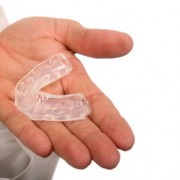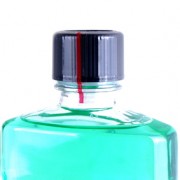Custom night guard benefits
A custom night guard protects people that have problems with bruxism. Bruxism is the compression and gritting of teeth. For some people, it is a mild annoyance. For others, this can become a serious issue that becomes difficult to control and treat at advanced stages.Typically, bruxism happens in your sleep.
The damage caused by bruxism can include:
- Serrations in the teeth
- Deterioration of the biting surface area
- Tooth fractures or breaks
- Tooth loss
- Headache
- Jaw pain
- Neck pain
As a person grinds their teeth, the incisors and canines move against one another sideways. This causes the degradation of the enamel, which leads to dulled biting edges. Bruxism not only causes problems for the individual suffering for it, but also for those around them. Some people grind their molars loudly while they sleep. If they are sleeping with anyone, that person is going to have a hard time trying to stay asleep.
Teeth grinding leads to serious dental harm, if left untreated. Many people are usually either unaware they have a problem, or aren’t as severely affected as others. That is because only five to ten percent people develop severe symptoms.
Treatment for Bruxism:
Unfortunately, there isn’t a direct treatment for bruxism itself. The best way to prevent additional damage is with a custom night guard. While this helps protect a person’s teeth, it doesn’t do much for the head and muscle pain caused by grinding. There are a few things someone can do to try to reduce the severity of their grinding:
- Reduce caffeine consumption
- Stay away from alcohol
- Avoid chewing on things that aren’t food, especially chewing gum
- Be more observant during the day. If you find yourself clenching, put the tip of your tongue in between your teeth. This forces your jaw to relax.
- Before bed, place a warm washcloth on your jaw to relax the muscles.
While these won’t necessarily eliminate the problem, they can help reduce the severity of it. Over the counter night guards are available, but if they don’t fit well, they can actually make the problem worse. A custom night guard will be measured to fit your mouth exactly. A dentist will use putty to take a mold of your mouth, and then he’ll send the impression off to be turned into a night guard. The end result is a perfect mold of your mouth that will protect your teeth and help you manage your grinding. Questions? Give us a call!






